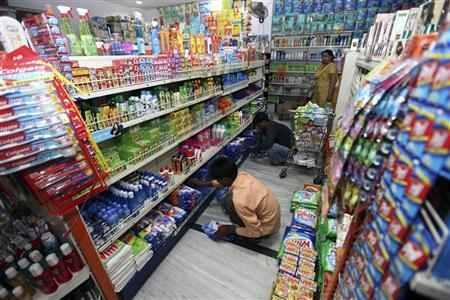 It is likely the momentum in the fast-moving consumer goods (FMCG) segment continued in the quarter ended September, with FMCG companies expected to report good profits, owing to strong volume growth.
It is likely the momentum in the fast-moving consumer goods (FMCG) segment continued in the quarter ended September, with FMCG companies expected to report good profits, owing to strong volume growth. Net sales of most companies would grow 15-18 per cent, with underlying volume growth of 13-14 per cent, said analysts tracking the sector.
Price-led growth during the quarter is likely to stand at three to five per cent, indicating companies would continue to take a calibrated approach on raising prices.
Even as manufacturers of essential items would have much to cheer, those marketing discretionary items, especially discretionary food products, could report a slowdown.
In the last few months, packaged food companies have seen volumes fall three to four per cent, as consumers cut purchases on account of high food inflation. Currently, wholesale price index (WPI)-based inflation stands at 7.8 per cent, while inflation based on the consumer price index stands at 9-10 per cent.
With the recent rise in diesel prices, both WPI- and CPI-based inflation are likely to rise, hitting discretionary spends further. Analysts say the pressure on discretionary spending could continue for some time.
Against this backdrop, consumer product companies are unlikely to raise prices significantly. Sunil Duggal, chief executive, Dabur India, says, "Who wants to add to inflationary pressures? The approach to price rises would be a cautious one."
A Mahendran, managing director, Godrej Consumer Products, agrees. "I don't see the calibrated approach to price rises changing anytime soon," he says.
However, margins of FMCG companies for the quarter ended September are unlikely to be hit, thanks to reduced inflationary pressure on the raw materials front. Market experts say companies are likely to report gross margins rose by 200 basis points in the quarter.
A revival in the monsoon in August and September helped tame agri-commodity inflation. For instance, copra prices fell about 10 per cent, while palm oil prices declined about 25 per cent in the last few months. While copra is used to manufacture coconut oil, palm oil is used in the production of soaps.
The revival in the monsoon has other implications, too. Fear that demand in rural areas could contract has now subsided. Rural areas account for about a third of the sales of consumer product companies. It is likely growth in sales in rural areas was strong in the quarter ended September.











